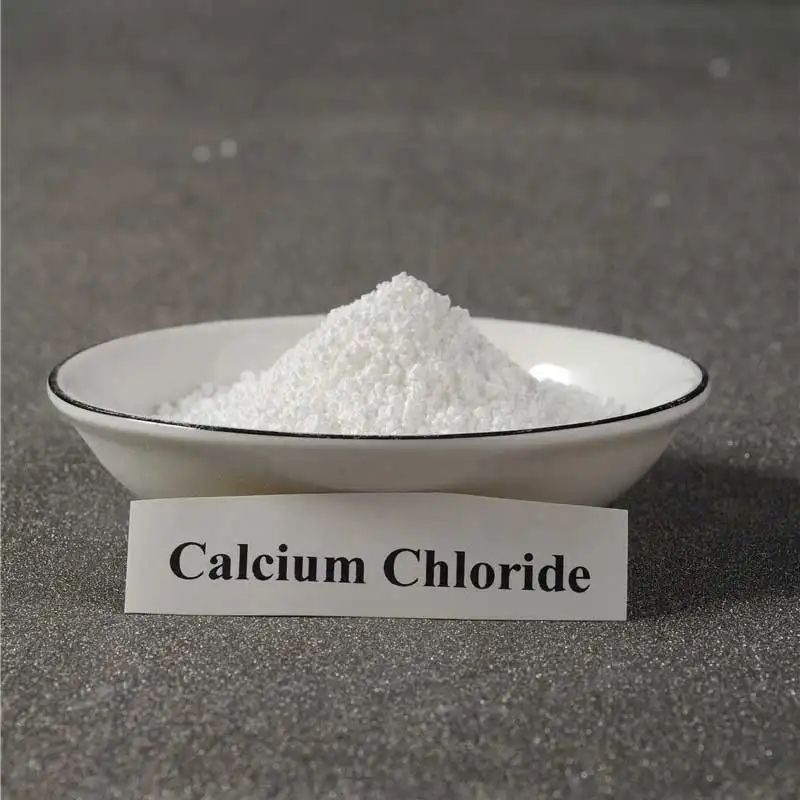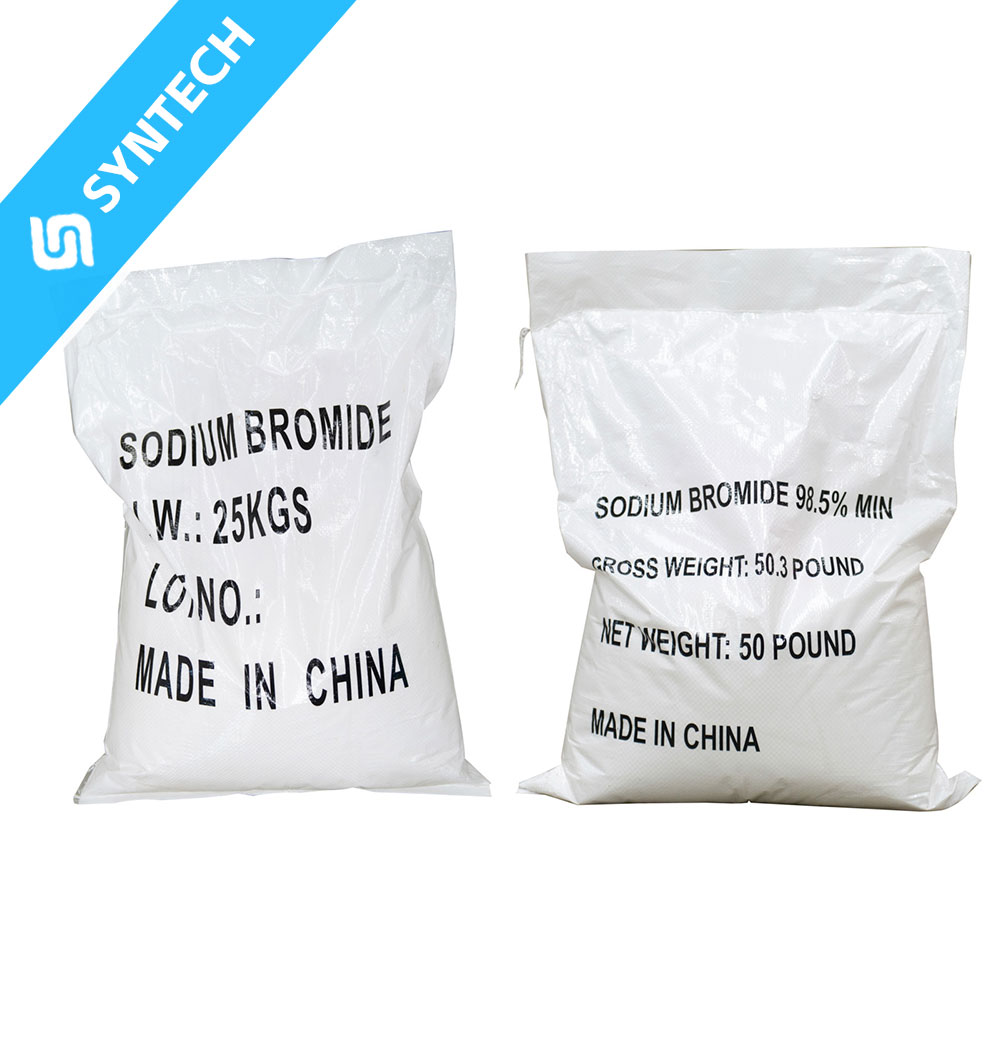In the fast-paced and high-stakes world of oil drilling, every component plays a vital role in ensuring safety, efficiency, and productivity. Among these essential components, calcium bromide (CaBr₂) stands out as a game-changer. As a soluble, high-density salt, it has become a cornerstone in drilling fluid formulations, addressing critical challenges faced by onshore and offshore drilling operations. This guide dives deep into why calcium bromide is indispensable in oil drilling, its key benefits, application best practices, and how it shapes the future of the industry—all tailored to help drilling professionals, procurement teams, and industry stakeholders make informed decisions.
Why Calcium Bromide Is a Must-Have in Oil Drilling
Oil drilling operations demand precision, especially when dealing with high-pressure reservoirs, sensitive geological formations, and strict environmental regulations. Calcium bromide’s unique chemical and physical properties make it perfectly suited to meet these demands, solving some of the industry’s most pressing pain points.
1. Unmatched Density for Well Pressure Control
One of the primary reasons calcium bromide is a staple in oil drilling is its ability to create high-density drilling fluids (brines). Well pressure control is non-negotiable—failure to balance the pressure of underground oil or gas reservoirs can lead to catastrophic blowouts, endangering workers, damaging equipment, and causing environmental disasters.
Calcium bromide brines, often blended with calcium chloride (CaCl₂) for optimal density adjustment, can reach densities ranging from 14 to 18 lb/gal (1.68 to 2.16 g/cm³). This density range is critical for:
- Counteracting high reservoir pressures, preventing fluid influx into the wellbore (kick) and blowouts.
- Maintaining wellbore stability by exerting sufficient hydrostatic pressure on the formation, reducing the risk of cave-ins or formation damage.
- Supporting extended-reach drilling (ERD) and horizontal well projects, where precise pressure management is even more challenging.
Unlike lower-density alternatives, calcium bromide brines eliminate the need for heavyweight additives (e.g., barite) that can clog wellbores, damage formation pores, or increase fluid viscosity to unmanageable levels.
2. Superior Corrosion Inhibition for Equipment Longevity
Steel drill pipes, casing, and downhole tools are the backbone of oil drilling operations—yet they are highly susceptible to corrosion in harsh drilling environments. Corrosion not only shortens equipment lifespan but also leads to costly downtime, unexpected replacements, and potential wellbore integrity issues.
Calcium bromide addresses this problem by acting as a natural corrosion inhibitor. Unlike chloride-based fluids (e.g., sodium chloride brines) that accelerate rusting, calcium bromide:
- Forms a protective film on metal surfaces, shielding them from corrosive agents in the drilling fluid (e.g., water, oxygen, and acidic byproducts).
- Reduces the rate of electrochemical corrosion, extending the life of drill pipes and casing by up to 30% in some operations.
- Minimizes the need for additional corrosion inhibitors, simplifying fluid formulations and lowering overall costs.
This corrosion resistance is especially valuable in offshore drilling, where saltwater exposure amplifies equipment degradation.
3. Compatibility with Formations and Additives
Oil drilling fluids (muds) are complex mixtures of base fluids, viscosifiers, shale stabilizers, and other additives—all working together to optimize performance. Calcium bromide’s chemical stability ensures seamless compatibility with these components, avoiding costly fluid breakdowns or formation damage.
Key compatibility benefits include:
- Shale Stabilization: Calcium bromide brines reduce shale hydration (swelling) by balancing the osmotic pressure between the wellbore and the formation. This prevents shale particles from disintegrating and clogging the wellbore, a common issue with freshwater-based drilling fluids.
- Additive Synergy: It works harmoniously with common drilling fluid additives, such as xanthan gum (viscosifier), lignosulfonates (fluid loss control agents), and biocides. This compatibility ensures consistent fluid performance even in extreme conditions (e.g., high temperatures up to 300°F/149°C).
- Low Formation Damage: Unlike solids-laden fluids, calcium bromide brines are “clear” (solids-free), reducing the risk of pore plugging in the reservoir. This preserves reservoir permeability, maximizing oil and gas production rates once drilling is complete.
4. Environmental Safety for Offshore and Sensitive Areas
As environmental regulations (e.g., the U.S. EPA’s Clean Water Act, EU’s REACH directive) become stricter, oil companies are under increasing pressure to use eco-friendly drilling fluids. Calcium bromide stands out as a more sustainable alternative to toxic options like zinc bromide or heavy metal-based fluids.
Its environmental advantages include:
- Low Aquatic Toxicity: When properly treated, calcium bromide brines have minimal impact on marine life (e.g., fish, crustaceans) compared to other high-density fluids. This makes it ideal for offshore drilling operations in ecologically sensitive areas, such as the Gulf of Mexico or North Sea.
- Biodegradability: In controlled environments, calcium bromide breaks down into harmless byproducts (calcium and bromide ions) that are naturally present in seawater, reducing long-term environmental footprint.
- Compliance with Regulations: Using calcium bromide helps drilling operators meet local and international environmental standards, avoiding fines and reputational damage.
How to Use Calcium Bromide in Oil Drilling: Application Best Practices
To maximize the benefits of calcium bromide in oil drilling, proper handling, formulation, and monitoring are essential. Below are key best practices to ensure optimal performance and safety.
1. Choosing the Right Calcium Bromide Grade and Form
Calcium bromide for oil drilling is available in two primary forms, each suited to different operational needs:
- Aqueous Solutions (Liquid Calcium Bromide): Typically 52–55% concentration, these are ready-to-use and easy to mix into drilling fluids. They eliminate the need for dissolving solids, saving time and reducing dust exposure. Liquid calcium bromide is ideal for offshore operations or projects where speed and convenience are priorities.
- Solid Form (Flakes or Powder): With a purity of 95–98%, solid calcium bromide is more cost-effective for large-scale onshore operations. It requires dissolution in water before use, so it’s important to ensure complete mixing to avoid undissolved particles that can clog equipment.
When selecting a grade, prioritize suppliers that offer oilfield-specific calcium bromide—this ensures the product meets industry standards (e.g., API Specification 13J for drilling fluids) and is free from impurities (e.g., heavy metals, sediments) that can compromise performance.
2. Formulating Calcium Bromide Drilling Fluids
The success of calcium bromide in drilling depends on proper fluid formulation. Here’s a step-by-step guide to creating effective brines:
- Determine Required Density: Calculate the target density based on the reservoir pressure (use well logs or formation tests to get accurate data). For example, a high-pressure reservoir may require a 16 lb/gal brine, while a low-pressure formation may only need 14 lb/gal.
- Mix Base Fluid: Start with freshwater or recycled drilling fluid, then slowly add calcium bromide (liquid or dissolved solid) while agitating the mixture. For density adjustments, blend with calcium chloride (lower density) or zinc bromide (higher density—use sparingly due to cost and toxicity).
- Add Additives: Incorporate viscosifiers (e.g., xanthan gum) to improve hole cleaning, fluid loss control agents (e.g., cellulose derivatives) to prevent fluid seepage into the formation, and biocides to inhibit bacterial growth (critical for extended drilling campaigns).
- Test and Adjust: Measure the density, viscosity, and pH of the fluid using on-site equipment (e.g., mud balance, viscometer). Adjust the calcium bromide concentration or additive levels as needed to meet operational requirements.
3. Handling and Storage Safety
Calcium bromide is hygroscopic (absorbs moisture from the air) and can cause skin/eye irritation if mishandled. Follow these safety protocols to protect workers and equipment:
- Personal Protective Equipment (PPE): Mandate nitrile gloves, safety goggles, and a dust mask (for solids) or face shield (for liquids) when handling calcium bromide. Avoid direct skin contact, as prolonged exposure can cause dryness or redness.
- Storage: Keep calcium bromide in airtight, moisture-resistant containers (e.g., HDPE drums for liquids, sealed bags for solids) in a cool, dry area. keep away from strong acids (e.g., hydrochloric acid) or oxidizers (e.g., chlorine gas), as these can trigger dangerous reactions (e.g., release of toxic bromine gas).
- Spill Response: In case of a spill, contain the area to prevent runoff. For liquid spills, use an absorbent material (e.g., vermiculite) and neutralize with a mild base (e.g., sodium bicarbonate) if needed. For solid spills, sweep up the powder and dispose of it in a labeled hazardous waste container—never pour calcium bromide into drains or natural water sources.
Calcium Bromide in Oil Drilling: Market Trends and Future Outlook
The demand for calcium bromide in oil drilling is closely tied to the global oil and gas industry’s growth. As energy security remains a top priority worldwide, here are the key trends shaping its market—and how they impact drilling operations.
1. Growing Offshore Drilling Drives Demand
Offshore oil and gas production is on the rise, with major projects in the Gulf of Mexico, Brazil’s pre-salt basins, and the Middle East. Offshore drilling relies heavily on calcium bromide due to its high density, corrosion resistance, and environmental safety—making it the preferred choice over toxic alternatives. According to industry reports, the offshore segment is expected to account for 60% of calcium bromide’s oil drilling demand by 2030.
2. Technological Advancements Improve Performance
Manufacturers are investing in R&D to enhance calcium bromide’s capabilities. Recent innovations include:
- Low-Viscosity Formulations: New calcium bromide blends that maintain high density while reducing fluid viscosity, improving hole cleaning and reducing pump energy costs.
- Eco-Friendly Additives: Biodegradable corrosion inhibitors and fluid loss control agents that work with calcium bromide to create fully sustainable drilling fluids, meeting the strictest environmental standards.
- Smart Monitoring Tools: Sensor-based systems that track calcium bromide concentration, density, and corrosion rates in real time, allowing for proactive adjustments and minimizing waste.
3. Supply Chain Considerations for Procurement
For drilling companies, securing a reliable supply of calcium bromide is critical. Key procurement factors include:
- Supplier Location: Choose suppliers with production facilities or distribution centers near drilling sites (e.g., Gulf Coast for U.S. offshore operations) to reduce shipping costs and delivery times.
- Quality Certifications: Prioritize suppliers with ISO 9001 (quality management) and ISO 14001 (environmental management) certifications, ensuring consistent product quality and compliance.
- Long-Term Contracts: For large-scale projects, negotiate long-term supply contracts to lock in prices and avoid shortages—calcium bromide prices can fluctuate with bromine raw material costs and global demand.
Conclusion: Calcium Bromide—The Backbone of Modern Oil Drilling
In oil drilling, where safety, efficiency, and compliance are non-negotiable, calcium bromide has emerged as an indispensable tool. Its ability to create high-density, corrosion-resistant, and eco-friendly drilling fluids addresses the industry’s most critical challenges, from well pressure control to environmental stewardship. Whether used in offshore deepwater projects or onshore horizontal wells, calcium bromide not only enhances operational performance but also reduces costs and mitigates risks.
For drilling professionals looking to optimize their operations, understanding how to leverage calcium bromide—from formulation to storage—can make all the difference. As the oil and gas industry evolves, calcium bromide will continue to play a key role in driving innovation and ensuring the sustainable production of energy worldwide.
If you’re ready to integrate calcium bromide into your drilling operations or need help selecting the right grade for your project, partner with a trusted supplier that specializes in oilfield chemicals. With the right expertise and products, you can unlock the full potential of calcium bromide and take your drilling operations to the next level.






